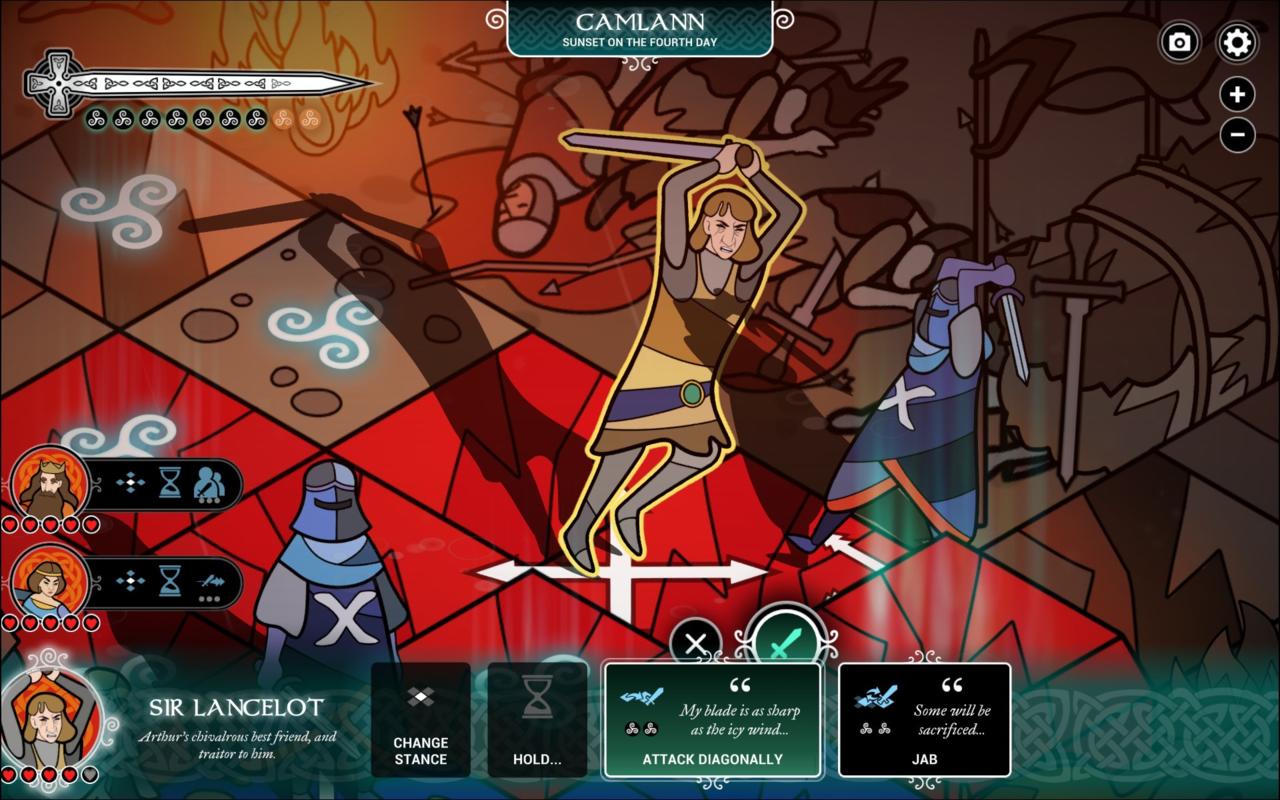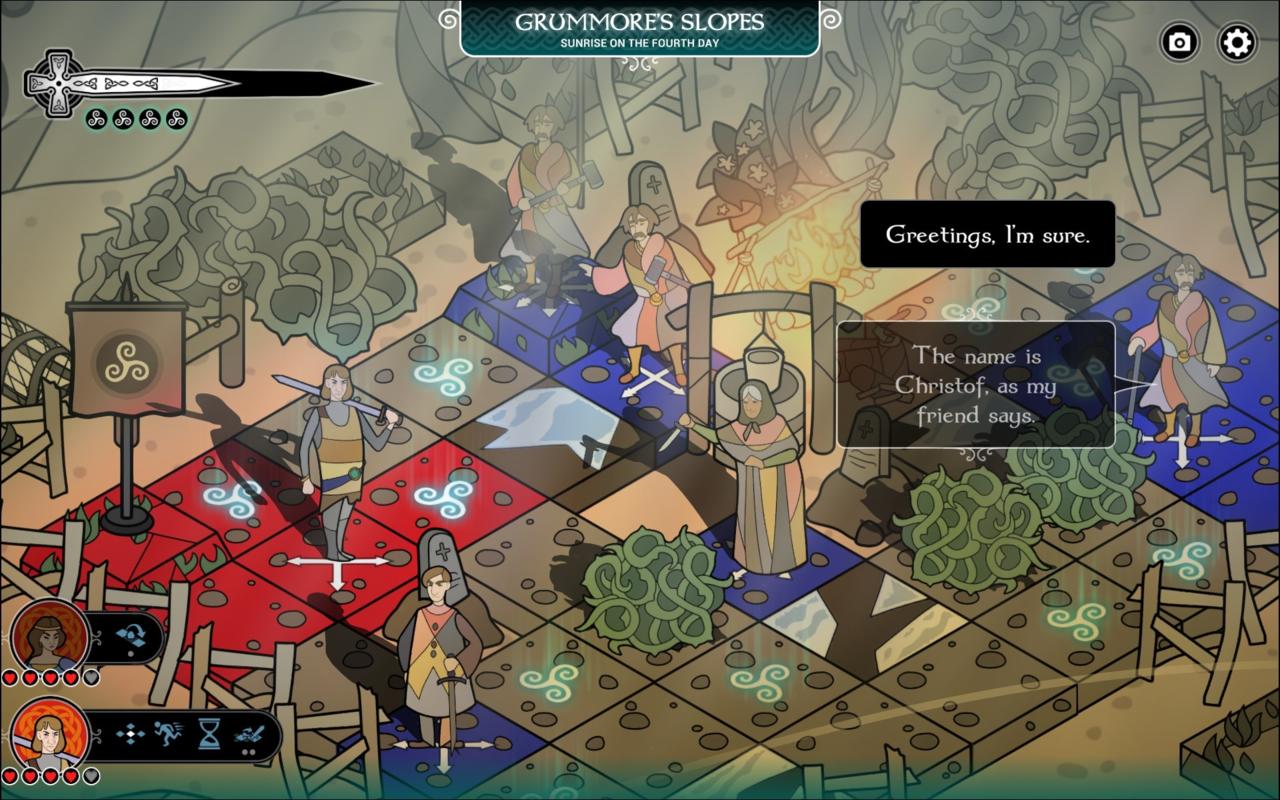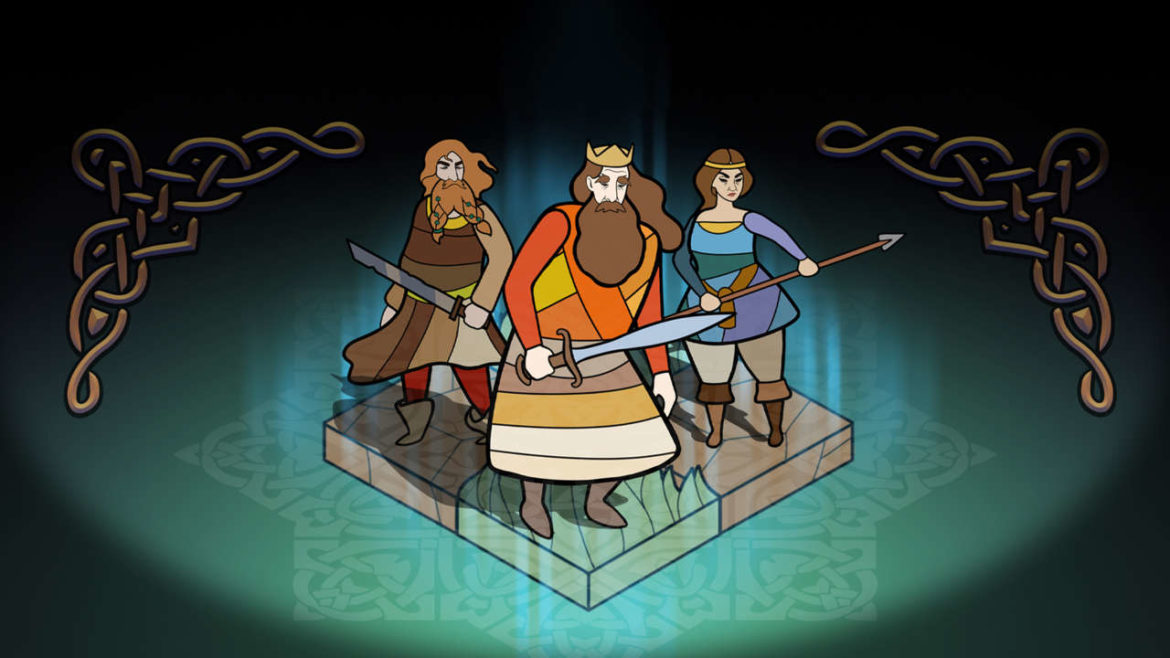Pendragon is a fascinating but flawed experiment in procedural narrative.
Legends are slippery things. One tells of Arthur, the once and future King of Britain who united the realm against the Saxon invaders. Where historical fact is elusive, literary fancy has imagined Arthur’s idyllic court of Camelot, its chambers populated with knights, wizards, and witches, its halls reverberating with chivalry, romance, and betrayal. In exploring the legend of Arthur, Pendragon mixes interactive fiction and tactical combat within a short-form roguelike structure to tell myriad tales. As a study of how myths are formed from countless half-truths, it’s effective. But as a narrative journey, it feels slight, its more admirable efforts undermined by repetition and an uneasy relationship with combat.
In this particular rendition of Arthurian legend, the story always begins in 673 A.D., about a week before Arthur reaches the castle of Camlann to face his son, Mordred, whose challenge for the throne has ignited a civil war. Each time you roll a new game, you’ll play as one of Arthur’s court–his estranged wife Guinevere, her possible lover Sir Lancelot, the enigmatic Merlin, to name three of the more familiar characters–dashing across Britain to aid the king in the climactic showdown. En route, you will run into characters that you can convince to ride with your banner, others you’ll need to put to the sword, and an alarming number of wolves, snakes, giant spiders, and rats to fight or flee from. Though rest and rations will help the wounded recover, all members of your party–even your starting character–can die permanently, and the journey is over if everyone falls in battle. A complete run will typically take only 20-30 minutes, depending on how quickly you find Camlann.

The rapid turnaround of a run serves to highlight the dynamic nature of Pendragon’s storytelling. By embarking on a new journey, you’ll quickly find yourself exploring a reconfigured map, discovering new locations and story events, and accumulating alternate perspectives on the core myths of the land. And the game does a remarkable job tying together the many disparate narrative threads you can follow throughout one run. In one run, I began as Morgana Le Fay before meeting and recruiting Guinevere. Morgana was later wounded in battle while Guinevere fled, leaving me to play on as the latter. By the time I reached Camlann, Guinevere too had perished and so I ended up facing Mordred’s knights with just Arthur’s brother, Sir Kay, and a strong-armed peasant blacksmith in tow. What’s impressive is that the dialogue doesn’t miss a beat; conversations feel coherent and reactive to whatever choice and chaos has occurred along the way.
Of course, there are limits. By the time I was on my fifth or sixth journey, I recognised that certain scenarios were repeating. I could tell, for example, upon arriving at the burned-out village that this was where I’d be able to recruit that blacksmith. But while some of the individual components do become familiar over time, the unpredictable order in which they occur and the different choices you’re able to make ensure that each journey, when considered as a whole, feels unique.










Encounters, regardless of whether they’re friendly or hostile, play out on a small isometric grid, often no more than half a dozen tiles squared. Characters switch between stances that inform their movement and available actions; with your weapon drawn you can attack but can move only linearly, while diagonal movement is possible only with your weapon sheathed. As a combat engine, it’s relatively simple yet capable of presenting interesting challenges through some further complexities. Outwitting a group of enemies–baiting them with one character while a second deploys a special ability from the flank, or switching stances at the crucial moment to prevent an attack–feels well-earned since every fight carries real danger. The condensed nature of a run means there’s no grinding and little filler.
You’re also not always fighting. Indeed, many encounters conclude without any steel being drawn. Characters engage in conversation as they move back and forth across the board, weighing up the situation. This verbal sparring, in conjunction with the gliding movements as each participant adjusts their stance and demeanor, feels like some kind of formal dance routine with each step accompanied by a witty riposte.
By contrast, such encounters underscore how Pendragon is at its weakest when not telling a story. Straight combat dulls the momentum of the journey. I had one run where Merlin and his companion fled from a pack of wolves only to meet another they couldn’t defeat. After fleeing from that, they ran into yet another pack and, with the ability to flee now removed, were killed in a premature and underwhelming end to their quest.

In general, the various wolves and wild dogs you meet, not to mention the giant spiders, snakes, and rats, seem out of place, a relic from another more combat-focused design. Encounters with wary peasants or knights of uncertain loyalty wring far greater tension out of the delicate “Are we gonna fight or are we gonna talk?” balance inherent in the combat engine. The stakes are raised here, and you come away feeling better informed about the politics of the world.
But even when you’re able to best appreciate Pendragon’s procedural storytelling, when you’re able to grab a handful of its narrative threads and weave them together across multiple half-hour playthroughs, the returns are diminishing. Each session is too short to allow for the consequences of your actions to carry real weight. By the time you make it to Camlann, you’re only just getting to know Lady Niambh or Sir Lancelot, and now it’s farewell until you are reunited on a future playthrough–minus any memory of what you just experienced together. And as the scenarios start to repeat, you’ve got to dig deeper to find something fresh.
Pendragon is a fascinating experiment in trying to marry procedural storytelling to a roguelike structure. It does so with mixed success. With smart writing at the forefront, it delivers a rich and evocative world steeped in fantastical adventure. But when its more mundane systems intrude, you find that reality is a little more prosaic.
